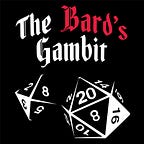Disney’s Queer-Coded Dilemma
Samantha Allen recently wrote an article for New Now Next called
“I Miss Disney’s Queer-Coded Villains—But the Next Generation Won’t,” in which she discusses the trend in old disney movies of queer coding villains to make them appear more evil and deviant. It’s a fantastic article that looks into why and how these villains were queer coded, and contemplates whether or not this queer coding should remain in modern live-action remakes. It’s incredibly thoughtful and I advise you to go give it a read (http://www.newnownext.com/disney-queer-coded-animated-villains/07/2019/?xrs=synd_facebook_logo)
I definitely agree that queer coding villains to make them more menacing is problematic for modern remakes given the shift in public opinion, and I have no intention of refuting any of her claims regarding LGBT+ representation in Disney movies: she made an excellent point. What interests me is the idea that taking away the queer coding in these villains makes them boring.
In taking away the queer coding in these villains, they have lost the essence of their character. If Jafar isn’t an over the top and preening villain, he’s just “a model who wants to be an autocrat.” And that’s boring. Its bland. Its uninteresting. But we’ve had villains in movies that weren’t queer coded that are interesting and fun, so what the hell happened?
Frankly, when they took away the queer coding in these characters they didn’t replace it with anything. You take away the personality for a character, no matter how problematic it may be, they stop being a character; they’re just a stereotype, a trope, a cut out. You could copy-paste the live-action Jafar into just about any movie where someone wants to take over a government and he’d be right at home, aside from still being a boring character.
This is something that happens a lot in adaptations and remakes, and it has always baffled me. Writers seem to think that if you take out the problematic parts of a character, then those characters will be ‘fixed.’ The problem is, you can’t take away a character’s personality without putting something in its place.
In Samantha’s article she mentions that Disney is “damned if they do, damned if they don’t;” If they had left the queer coded villainy in, then people will be upset, but people are also upset that it was taken out. However, I don’t think that’s accurate. Disney has a couple of options if they really care about fixing these issues and maintaining a high quality narrative.
First of all, just increase representation across the board. Start queer coding some heroes, or even just make them actually queer. Preferably the latter. The spectrum of LGBT+ doesn’t start and stop with gay representation, let’s get some Pansexual heroes, or even Asexual heroes. Wouldn’t it be awesome to see Mulan come out and have the stupid romance subplot stripped away so she’s just an Ace heroine? Or to see a Hercules adaptation where we get both Megara AND Iolaus?
That’s honestly the easiest one, you just tell the stories as they should be. The harder option, if you’re looking to do a little flexing, is to use the queer-coding to flesh out the characters. The idea that these characters need to be ‘fixed’ because they are problematically coded is… well, I’m sure it would sound familiar to a lot of LGBT+ people who grew up in the bible belt. But using their queer-coding to flesh out their characters would be amazing! Audiences are tired of villainy for the sake of villainy anyway, so maybe Jafar wants power so he can be with his companion. You’d have to change Iago from a bird into a man, but that’s hardly the worst thing to do. Just… don’t make him Gilbert Gottfried, please. Once was enough.
